THE SULTANS OF DECCAN
سلاطین دکن
1500-1700
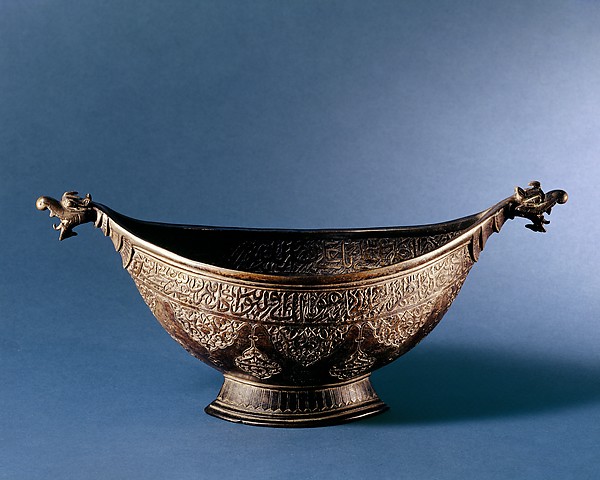
Being a Pakistani with no personal family ties to per-Partitioned India, I had a rather naive impression about Deccan for a long
time. To me it meant south and as Hyderabad is south of Delhi, so perhaps the rulers
referred to the South as Deccan. It was the name of the State with Hyderabad as its capital.
What I remembered from history lessons in school was that somewhere in the times of Delhi Sultanate, perhaps Tughlaq's that South was invaded and it became a part of Muslim rule.
So it was a pleasant surprise when the exhibition Sultans of Deccan India 1500-1700: Opulence and Fantasy opened at Met. It is the end result of ten years of painstaking collection and is
on display April 20–July 26, 2015.
The golden age of the Deccan dawned during the reign of the
powerful Bahmani Dynasty (1347–1538) who broke away from the Dehli Sultanate.
The Bahmani Sultanate had five provinces
in it. After a period of time the four states revolted and declared independent
sultanates. The center was declared a separate sultanate the then prime
minister. There was an interesting mix of Muslims of different origins and
backgrounds. There were the rulers from the North, mostly Afghans and Turks; ,
then there were Persians ie westerners maghrabain, and Arab traders and
African slaves. Over a period of time, the later generation of now ‘native’ Muslims,
the Deccani, had a different take on things as the newly arrived foreigners from
the North and West. It resulted in many controversies and tensions over these two centuries.
Eventually, the Sultanates were absorbed by the Mughals. The credit of that goes mostly to nobody other than Aurangzeb, who had spent a life time in Deccan before eventually becoming the King. And later one of his generals, founded the independent state of Hyderabad under the title of Nizam.
Eventually, the Sultanates were absorbed by the Mughals. The credit of that goes mostly to nobody other than Aurangzeb, who had spent a life time in Deccan before eventually becoming the King. And later one of his generals, founded the independent state of Hyderabad under the title of Nizam.
The most important of these states was Ahmadnagar, which is now part of the State of Maharashtra. It was
first to declare independence and later it annexed a neighboring mountainous
state of Berar. The rulers were Nizam Shahi. Here an African slave turned general Malik
Anbar kept the Mughuls at bay and did not let Jahangir take over. There is
a very telling painting of the wish of Jahangir to kill Anbar with his own
arrow. More on it in the blog Jahangir Shoots Malik Anbar. Click here.
Mughals eventually took over but after the death of both Jahangir and Malik Anbar.
Mughals eventually took over but after the death of both Jahangir and Malik Anbar.
The state of Bijaypur ( city of knowledge) was ruled by Adil
Shahi clan. They were great patrons of music, poetry and paintings. Some of the sultans
were themselves musicians and painters. It surrounded
Goa and were hence in close contact with Portuguese and Western influence. Its capital is one of the most
beautiful architecture.
Bidar was one of the smaller Sultanates and was eventually
defeated by Bijaypur. Here one sees the famous birdi work of inlays in metals.
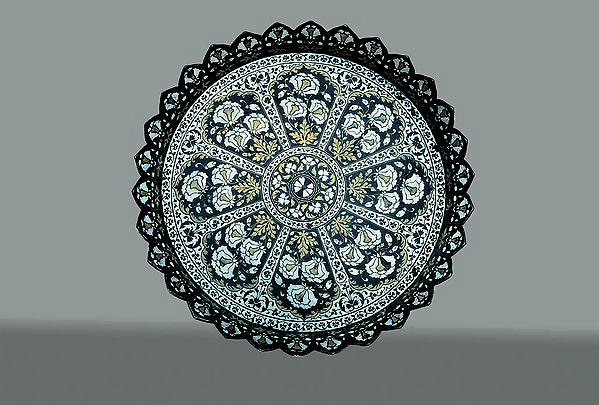
Golcanda was ruled by the Iranian Qutub Shahi family,
immigrants from Persia. It is famous for diamonds and kalamkari work on cloth. Now Agha Khan Trust is working on conserving the gardens.
There was one European colony presence on each coast. On the
west was Goa, where the Viceroy of all the Portuguese colonies Estado da India
in the East resided and had opulent and grandeur buildings. On the east coast,
the Dutch presence at Masulipatnam was rather utilitarian and survived at the
whim of local sultans.
There was a Hindu state further south of Deccan Vigainagri
and it was the destruction of Vijayanagari and the loot of its art and material
which was the building block of the richness of arts and crafts of the Deccan
Sultanates.
The exhibition is basically divided into the different
sections One for each state.

It starts with the collection of diamonds. A few things of
notice. Most of the diamond cuts favored were rather flat and used as a taweez
or talisman. A famous Shahjahan Diamond
is there in the beginning. Before Brazilian and African diamonds were
discovered in 18th century onwards, almost all the diamonds of the
world were from Deccan. Golcanda, one of the four Deccan Sultanates was famous
for diamonds. Kohinoor is supposed to be from Golcanda
Many of the miniature art is work of many unknown artists and it seems that many themes
were taken from early European and Persian influences.

The usual slave trade routes to the North were cut by the presence of adversarial Dehli Sultans and later the Mughals. Deccan Sultans turned to Africa and Indian Ocean routes for slaves. The advantage the rulers had with Africans was that they would not have their own family issues and would be loyal to the Sultans. There were many African slaves and some of them made it to the top to the position of Army Generals and Prime Ministers. More famous names are Malik Anbar and Ikhlas Khan, the prime minister of Bijaypur.
I had heard of slaves being kings in India and Egypt ie
Slave Dynasty in India and the Mamluks in Egypt but did not know that actual
African slaves have been rulers in India. As one speaker in a symposium
mentioned that if you were an African slave traded East (Arabia, India etc)
instead of West (Americas) you had a good chance of moving up the ladder and a
shot at ending up being a king. In America is has happened in our life time for
the first time.
A most telling painting is the wish for Jahangir to kill
Malik Anbar with his own arrow. Malik Anbar was the one who was able to take
Ahmadnagar back from the Mughal invasion during Akbar's time. Jahangir spent
a life time to regain it back but was rebuffed by Malik Anbar all the times.
This painting (above) has many interesting features. More on it in a separate blogpost.click here

The Aurangzeb as a Prince in Deccan was quite a connoisseur
of art. He patronized the arts.
His portrait as a young prince has many Deccan features.
When his wife died, he build a mausoleum of his wife on the style of Taj Mahal
called Bibi Ka Mizar.in Aurangabad
THIS IS NOT TAJ MAHAL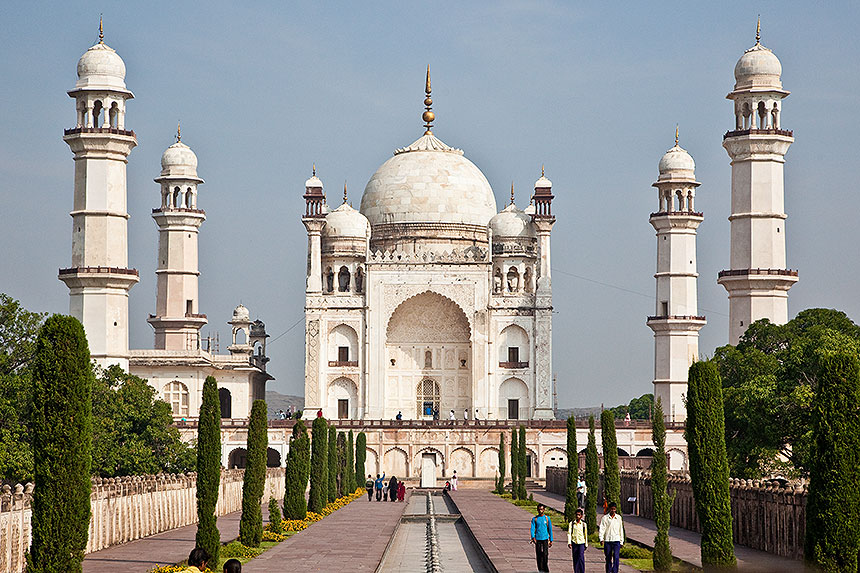

When he eventually took over the Deccan, much of the art and
music influence of Deccan into Mughal North followed. So in many ways Aurangzeb
was the vehicle of development of art in the North.
DECCANI LANGUAGE
Deccani language, one of the Urdu dialects was a different
language to begin with. It has those strange phrases as we see now. May have a Devanagari
script but the Persian script is well represented in the exhibition. It is a
copy of a folklore Gulshan e Ishq by Mullah Nusrati. A story of Prince Manohar’s
quest to attain Madhumalati.
UNIQUE CALLIGRAPHY STYLE
Some of the calligraphy on the buildings had a unique style.
For example the stems of the long letters were knotted and made a form of an arcade,
not to be seen anywhere else.
FULL QUR'AN ON A COTTON SCROLL. ONE OF A KIND
Never seen on heard anything like this. The full Quran on a 11 feeet by 21 inches scroll by Abdullah Sururi and now in collection at Kuwait is at display. It is in miniscule ghubar script. Each surah starts with a gold medallion and each juz and quarter of a juz are marked. A real treat to watch. See if you can magnify and read the script yourself. Click here

FULL QUR'AN ON A COTTON SCROLL. ONE OF A KIND
Never seen on heard anything like this. The full Quran on a 11 feeet by 21 inches scroll by Abdullah Sururi and now in collection at Kuwait is at display. It is in miniscule ghubar script. Each surah starts with a gold medallion and each juz and quarter of a juz are marked. A real treat to watch. See if you can magnify and read the script yourself. Click here

DAMAGE DONE BY ENGLISH PRESERVATIONISTS:
In English time, many of the buildings tombs were plastered
with cement perhaps to save them, and made them ugly. Now some of the work done
by preservationists and conservationists like Agha Khan Trust shows the real
beauty under the cement. One famous example is the Quli Gang Bagh in Golcanda.
There is nothing like it. It has 70 buildings in it and 17
of them are world heritage sites.
There is a great slideshow at the met website Click Here
There was an accompanying program hosted by Willaim Dalrymple which we could not attend despite being there. It filled to the capacity way ahead of time.
I was able to attend day two of a symposium on the exhibition, where the talks were about the architecture, photography and conservation of the artifacts.
Some of the paintings
Dervesh Receiving a visitor
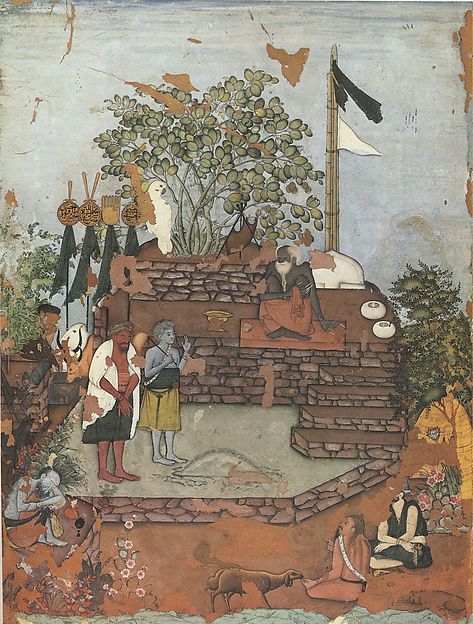
---
Malik Anbar
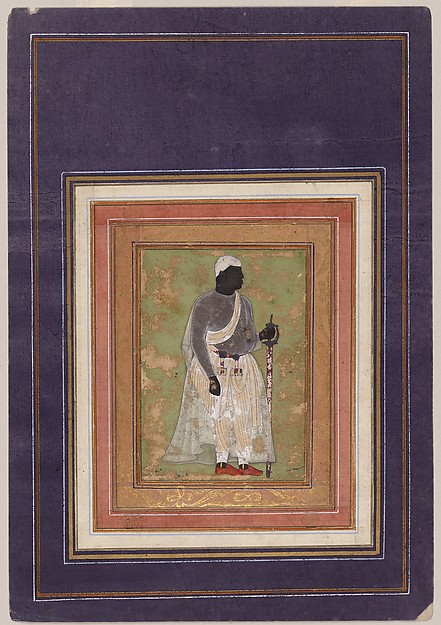 ---
---Ikhlas Khan
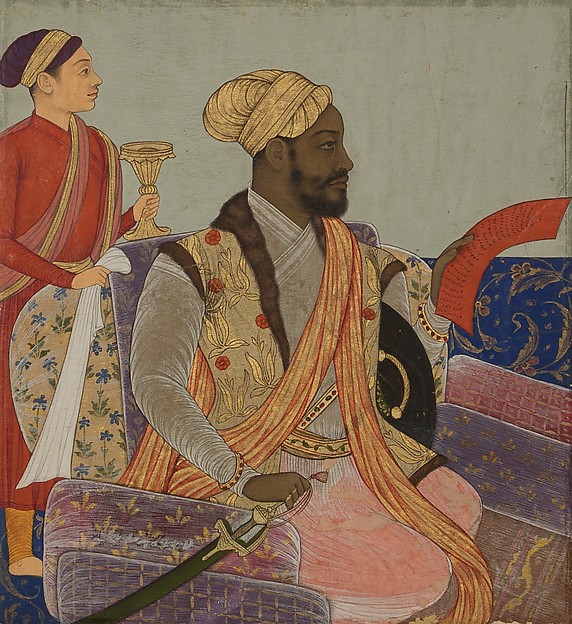 ---
---The Dancing Girl



No comments:
Post a Comment